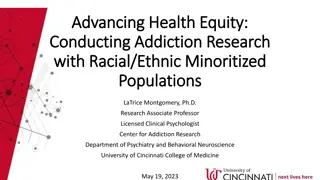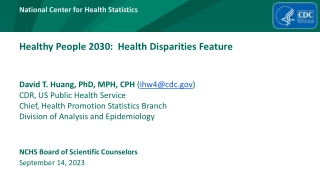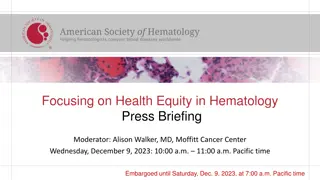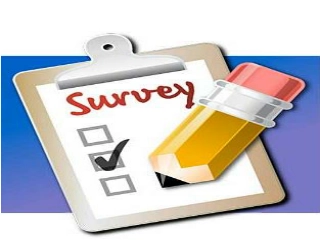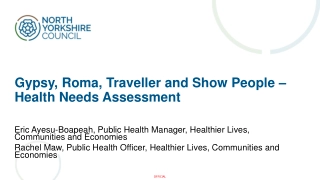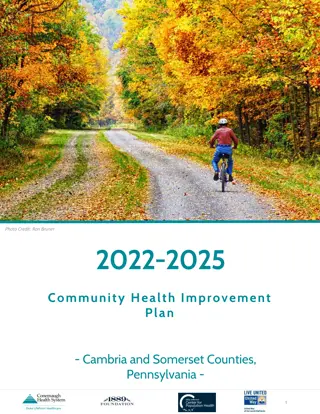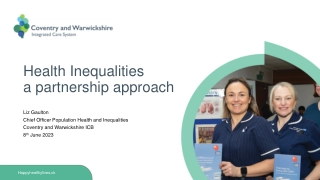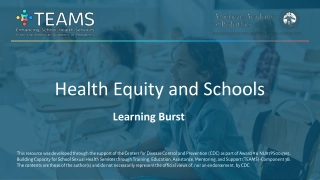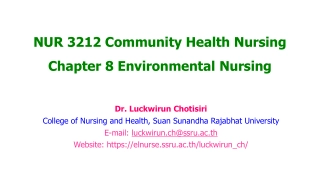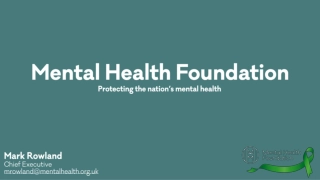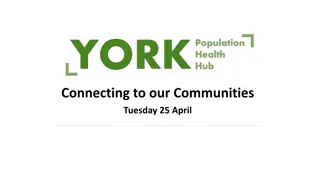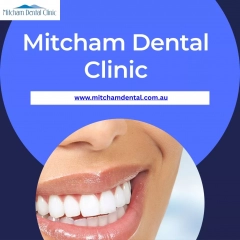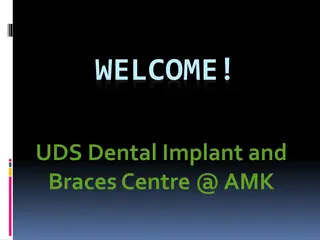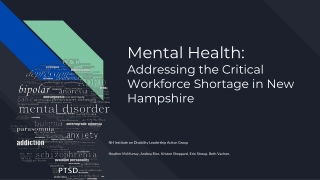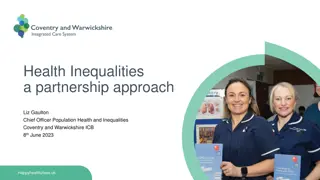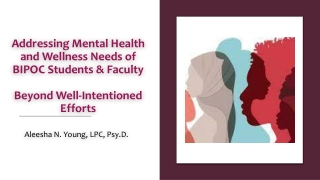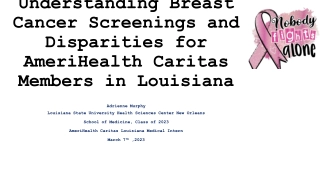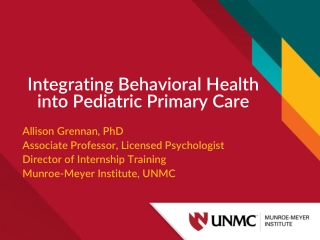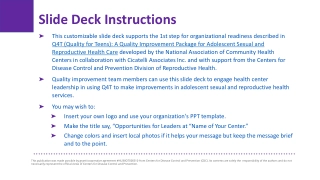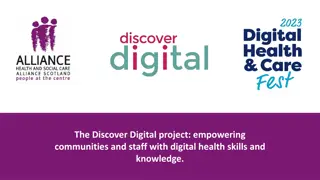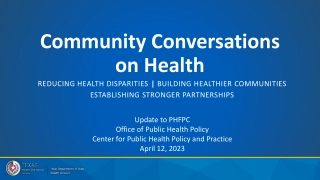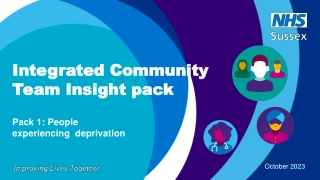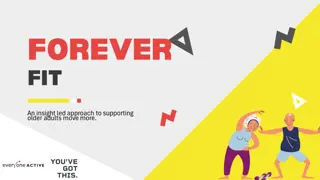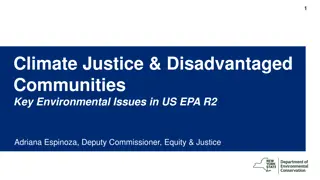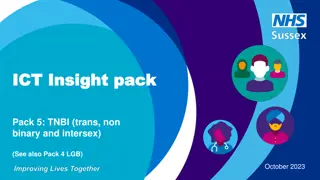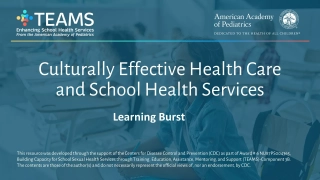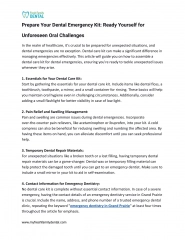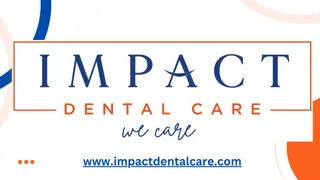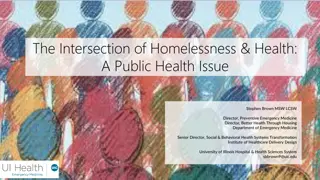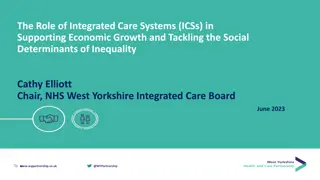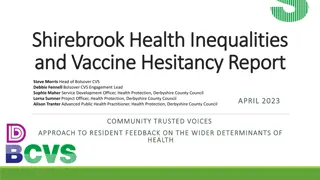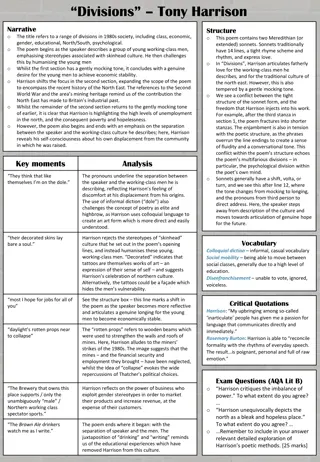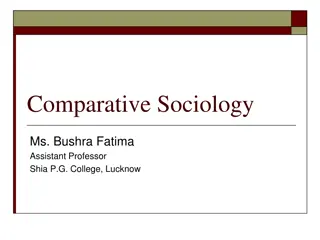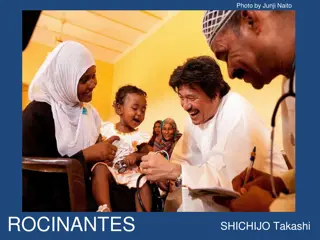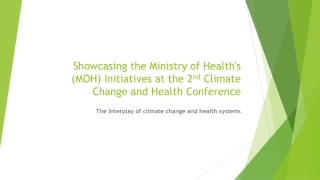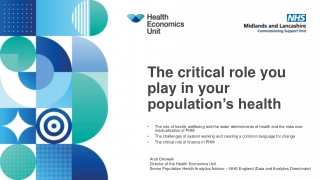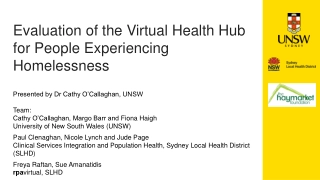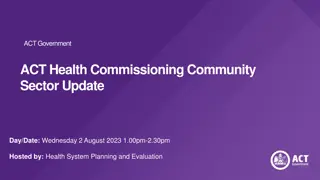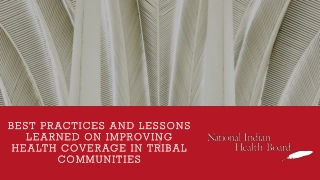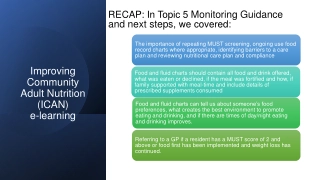Addressing Oral Health Disparities in School Communities
This resource highlights the importance of improving pediatric oral health outcomes in schools through community partnerships. It discusses the existing disparities, barriers to accessing dental care, and the impact of oral health on educational outcomes. The learning outcomes include identifying disparities, listing potential partners, and simple steps school health staff can take to enhance students' oral health.
Addressing Oral Health Disparities in School Communities
PowerPoint presentation about 'Addressing Oral Health Disparities in School Communities'. This presentation describes the topic on This resource highlights the importance of improving pediatric oral health outcomes in schools through community partnerships. It discusses the existing disparities, barriers to accessing dental care, and the impact of oral health on educational outcomes. The learning outcomes include identifying disparities, listing potential partners, and simple steps school health staff can take to enhance students' oral health.. Download this presentation absolutely free.
Presentation Transcript
Community Partnerships: Improving Student Oral Health in Schools Learning Burst This resource was supported by Cooperative Agreement Number NU38OT000282, funded by the Healthy Schools Branch -Centers for Disease Control and Prevention. Its contents are solely the responsibility of the American Academy of Pediatrics and do not necessarily representthe official views of the Centers for Disease Control and Prevention of the Department of Health and Human Services.
Learning Outcomes By the end of this learning burst, participants will be able to: Understand the existing pediatric oral health disparities List potential community partners to improve pediatric oral health outcomes List 2-3 simple steps that school health staff can consistently do to improve oral health of their students
Oral Health Disparities Low-income children have higher rates of unmet oral health needs About half of children enrolled in Medicaid did not see a dentist in 2019 The prevalence of treated and untreated tooth decay among American Indian, Alaska Native, Native Hawaiian, Hispanic and Black 3rdgraders is considerably higher than White children while use of dental sealants is lower https://www.cdc.gov/oralhealth/oral_health_disparities/index.htm https://www.pewtrusts.org/en/research-and-analysis/articles/2022/03/11/inequitable-access-to-oral-health-care-continues-to- harm-children-of-color
Barriers to Accessing Dental Care More than 64 million people in the US including millions of children live in areas with dental provider shortages Access to care is limited for millions of children who rely on Medicaid and CHIP Fewer than a third of US dental practices treated patients on public insurance in 2020 Children living in rural communities are likely to experience barriers to oral care https://www.pewtrusts.org/en/research-and-analysis/articles/2022/03/11/inequitable-access-to-oral-health-care-continues-to-harm- children-of-color
Oral Health and Educational Outcomes Children who have poor oral health often miss more school and receive lower grades than children who have good oral health. Health inequity can create educational inequity.
Community Partners to Impact Oral Health Possible partners to consider: Community Health Clinics Dental Providers Universities and Colleges Dental Insurance Companies/Foundations State Health Departments State Oral Health Coalitions
Community Health Clinics (CHC) Identify CHC in your community Ask about their various clinic services Ask specifics about dental services Provided by dental providers Provided by primary care providers Ask about existing CHC partnerships in schools Ask about CHC interest in supporting oral health in schools
Dental Providers Get to know your dental community Know which dental practices are taking new patients Know the type of insurances that each practice accepts Ask about provider interest in supporting oral health in schools Dental assessments Dental education Dental sealants
Universities and Colleges Identify local or state dental schools Dentist, Dental Hygienist and/or Assistants Identify opportunities to partner Dental assessments Dental education Fluoride varnish Dental sealants Cleanings
Dental Insurance Companies/Foundations Grants for oral health initiatives Provide free dental supplies for schools Provide educational materials for students Provide information for parents on accessing insurance for students and family members Provide list of local dentists currently accepting Medicaid
State Oral Health Programs State Oral Public Health Division (DOH) Oral health data Strategic planning Current school initiatives Funding for new projects State Oral Health Coalitions Department of Human Services (DHS) Dental Coordinator/Officer
Steps for School Staff to Improve Oral Health Talk about oral health at each encounter Identify risk factors for poor oral health Include a dental hygienist on your team Learn to perform an oral assessment Learn to differentiate between normal and abnormal findings Educate educate educate
Oral Health Education Provide students with simple dental tips to improve outcomes Brush Floss Avoid sugary foods and drinks Avoid sharing saliva Visit a dentist Send home information for families
Recap Oral health education, assessments, and referrals are important strategies for improving health and decreasing absenteeism Partnerships can increase access to dental care, education, and the availability of preventive services School health staff can play a role in improving health outcomes for children Providing services in school increases health equity, which can improve attendance in school and educational success
Make a list of potential community partners Reach out to key contact(s) Consider developing an oral health advisory group Start small, grow your partners over time Have patience and persistence and success will come
Resources Bureau of Health Workforce, Health Resources and Services Administration (HRSA), U.S. Department of Health & Human Services, Designated Health Professional Shortage Areas Statistics: Designated HPSA Quarterly Summary, as of September 30, 2022 available at https://data.hrsa.gov/topics/health-workforce/shortage-areas. Buerlein J. (2010). Promoting children's oral health. A role for school nurses in prevention, education, and coordination. NASN school nurse (Print), 25(1), 26 29. https://doi.org/10.1177/1942602X09353053 Centers for Disease Control and Prevention. Oral Health Surveillance Report: Trends in Dental Caries and Sealants, Tooth Retention, and Edentulism, United States, 1999 2004 to 2011 2016. US Dept of Health and Human Services; 2019. Devlin, D., & Henshaw, M. (2011). Improving Access to Preventive Dental Services through a School Based Dental Sealant Program. American Dental Hygienists' Association, 85(3), 211-219. Griffin SO, Thornton-Evans G, Wei L, Griffin PM. Disparities in dental use and untreated caries prevalence by income. JDR Clin Trans Res. 2020:2380084420934746. doi:10.1177/2380084420934746 Griffin, S., Naavaal, S., Scherrer, C., Griffin, P. M., Harris, K., & Chattopadhyay, S. (2016). School-based dental sealant programs prevent cavities and are cost-effective. Health affairs, 35(12), 2233-2240. Griffin SO, Wei L, Gooch BF, Weno K, Espinoza L. Vital Signs: Dental Sealant Use and Untreated Tooth Decay Among U.S. School-Aged Children. MMWR Morb Mortal Wkly Rep 2016;65:1141-1145. DOI: http://dx.doi.org/10.15585/mmwr.mm6541e1external icon
Resources Holmes, B. W., Sheetz, A., Allison, M., Ancona, R., Attisha, E., Beers, N., ... & Young, T. (2016). Role of the school nurse in providing school health services. Pediatrics, 137(6). Inequitable Access to Oral Health Care Continue to Harm Children of Color. The Pew Charitable Trusts Dental Campaign. Available at: https://www.pewtrusts.org/en/research-and-analysis/articles/2022/03/11/inequitable-access-to-oral- health-care-continues-to-harm-children-of-color Krol, D. M., Whelan, K., & SECTION ON ORAL HEALTH. (2023). Maintaining and improving the oral health of young children. Pediatrics, 151(1), e2022060417. Naavaal S, Kelekar U. School hours lost due to acute/unplanned dental care. Health Behav Policy Rev. 2018;5(2);66 73. OHRC: National Maternal and Child Oral Health Resources Center. Available at: https://www.mchoralhealth.org/ Pew Charitable Trust. Inequitable Access to Oral Health Care Continues to Harm Children of Color. March 11, 2022. https://www.pewtrusts.org/en/research-and-analysis/articles/2022/03/11/inequitable-access-to-oral-health-care- continues-to-harm-children-of-color Smiles for Life Curriculum. Available at: https://www.smilesforlifeoralhealth.org/all-courses/ Young D, Brown ZM, Somers S. Perkins J. Children s Health Under Medicaid: A National Review of Early and Periodic Screening, Diagnostic, and Treatment Services 2015-2019. 4th ed. National Health Law Program; 2021. Accessed April 27, 2022. https://healthlaw.org/wp- content/uploads/2021/06/2021.07-EPSDT-Chart-Book.pdf
Additional Questions Contact Agency Contact Person and Title Contact Email Address Contact Phone Number


